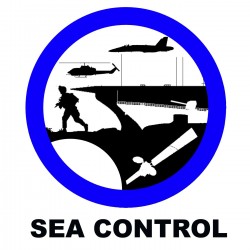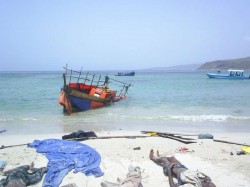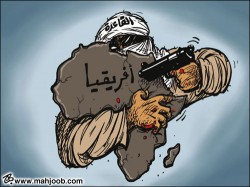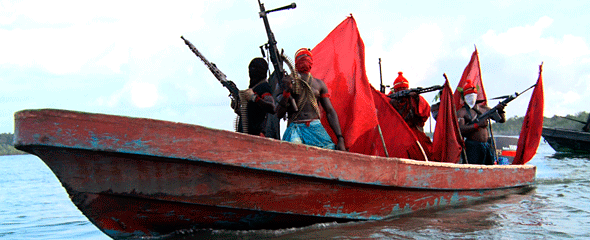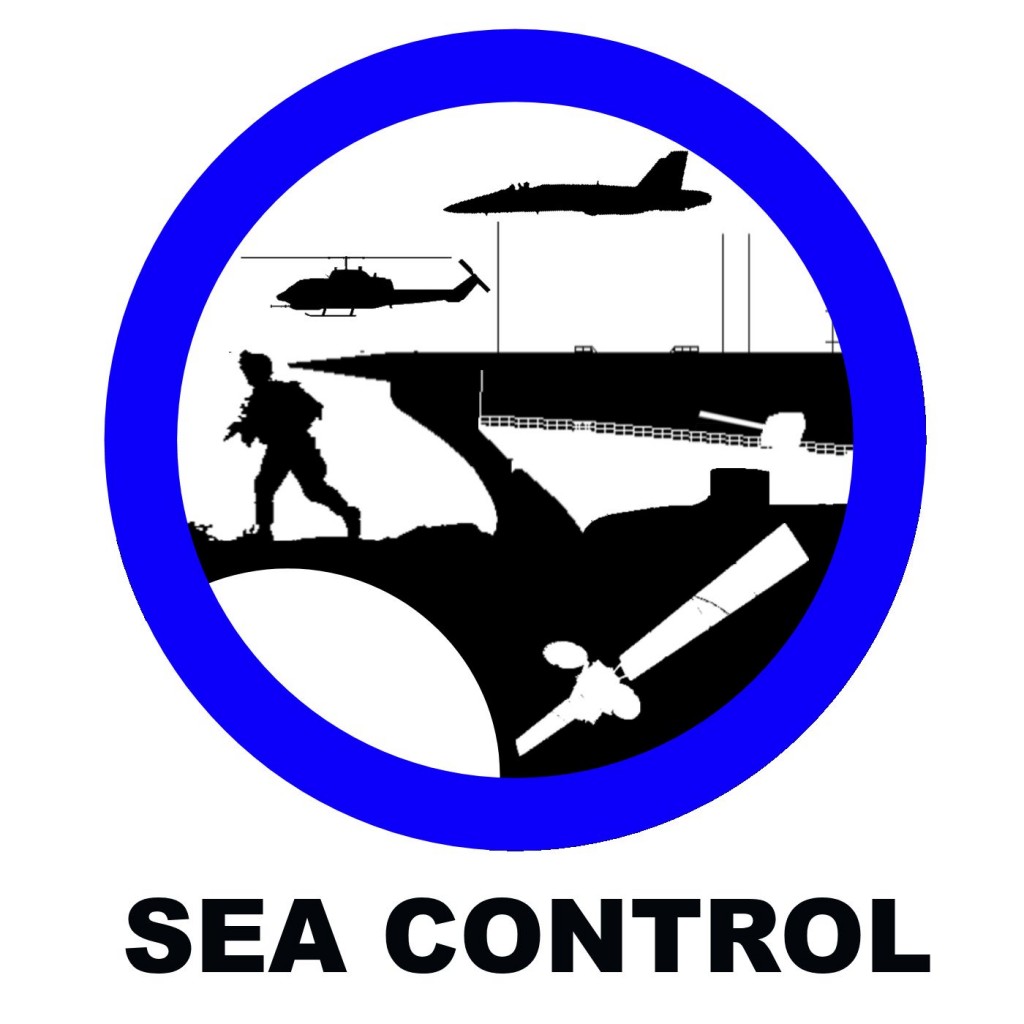 Matt and Chris wax on about the new budget deal and military benefits before finally discussing the incident between the Chinese and American navies, the Pacific balance, robotics, and books for the holidays. Remember to tell a friend and subscribe on Itunes or Stitcher Stream Radio. Leave a rating and a comment. Enjoy, Episode 13 of Sea Control, The Queen’s Shilling (download).
Matt and Chris wax on about the new budget deal and military benefits before finally discussing the incident between the Chinese and American navies, the Pacific balance, robotics, and books for the holidays. Remember to tell a friend and subscribe on Itunes or Stitcher Stream Radio. Leave a rating and a comment. Enjoy, Episode 13 of Sea Control, The Queen’s Shilling (download).
Category Archives: Global Analysis
A Geographical Breakdown of What’s Going on in the World
Human Smuggling Across the Gulf of Aden (2013 Edition)
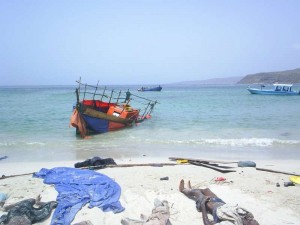
Last week the UN High Commissioner for Refugees (UNHCR) released figures on the number of migrants crossing the Gulf of Aden (and risking their life) by sea and arriving at their destination in an “irregular” manner. The quantity of African migrants seeking a better life to the north was actually significantly down from last year, with approximately 62,000 arrivals in Yemen during 2013 so far (compared to approximately 89,000 in the first ten months of last year). In all of 2012, 107,500 people had made the same journey, a slight increase from 103,000 in 2011. 2011 and 2012 were by far the highest annual figures since UNHCR began collecting records in 2006.
Most of the migrants this year were Ethiopians (51,687), reflecting the ongoing trend since 2009. Their rationale and plan for such a dangerous journey was typically “the difficult economic situation at home” with them “hoping to travel through Yemen to the Gulf States and beyond.” The remainder were mostly Somalis, who are “automatically” recognized as refugees, unlike citizens of other states whose ultimate status must be determined by UNHCR.
The journey across the Gulf of Aden is the one of the most used of the many dangerous maritime routes currently employed by desperate migrants trying to get to more economically developed nations. Dangerous conditions and unscrupulous vessel owners are unfortunately common, with the October sinking near the Italian island of Lampedusa of a migrant boat whose voyage originated in Libya gaining worldwide attention after killing at least 300.
The European Union’s EUROSUR effort is supposed to “to reduce the number of deaths of irregular migrants by saving more lives at sea,” but even if it proves effective in making the Mediterranean crossing less deadly, it is unclear whether such an initiative could be replicated in the seas between Yemen and Somalia.
On a related note, in recent days there have been riots and battles between the authorities and undocumented immigrants (many Ethiopian) in Riyadh, Saudi Arabia. The government claims that it has detained 30,000 illegal workers. Unfortunately, a government crackdown on undocumented labor in Saudi Arabia may currently be one of the best demand-side deterrents that could discourage potential migrants from risking their lives by attempting such a risky voyage.
Lieutenant Commander Mark Munson is a Naval Intelligence officer currently serving on the OPNAV staff. He has previously served at Naval Special Warfare Group FOUR, the Office of Naval Intelligence, and onboard USS ESSEX (LHD 2). The views expressed are solely those of the author and do not reflect the official viewpoints or policies of the Department of Defense or the US Government.
Africa: “A Problem As Unique As Each of its Constituent Parts”

Regarding Mr. Hipple’s article “African Navies Week: Al Shabaab is Only the Beginning”, he addressed a critical issue which all too often does not receive proper attention. It is a daunting prospect to try and pull in the disparate threats from across the continent formulating a single threat analysis and, while his conclusion is accurate in that he points out the diverse threats facing the continent, from a purely security-focused perspective, it still lacks some necessary clarity. The problem is the moment you start looking at how individual factors within a given country are driving conflict/instability, you quickly lose the scent of how it ties into the transnational threat groups. There is also the problem of how far back you are willing to look, the specter of Colonialism is still present and the post-colonial relationships cannot be entirely discounted.
There are too many fundamentally different factors at play across Africa to compare the potential for total, though not collective chaos that threatens the continent and still have the comparison to Afghanistan be a strong one. While Afghanistan is easily evoked as a common point of reference and there are elements of similarity that narrowly can be compared, each region of the continent has enough of its own issues to cause the wheels to come off of the Afghan comparison. Additionally, once you make the comparison to Afghanistan it easily leads to a false equivalency.
The threat from Boko Haram (BH) is real and growing yet the Nigerian Government is wholly unprepared to handle it – their heavy-handed tactics have increased distrust in the government and have not deterred or degraded BH. More importantly, the growing alignment between Al Qaeda in the Islamic Maghreb (AQIM) and BH marks a significant development in the connectivity of pan-African terrorism. However, these groups do not monopolize the West African threat. The spread of BH into Cameroon is tied to their evasion the Nigerian military’s offensive operations. What is happening in Niger with regards to BH is mostly proximate. The more apt comparison for the growing instability in Niger is the likeness to Mali where you see disenfranchised Tuaregs of the north returning from service in Libya (Gaddafi’s desert battalions) flush with weapons, training and a desire to have a say in their government. In both Mali and Niger, the Tuaregs have been persecuted and altogether cut out of the political process by the ethnically separate majority in the southern capitals.
Disenchantment with the government in Bamako and simmering ethnic discord set the stage for French operations in January, however, what caught world attention was the marriage of convenience by the MUJWA and elements of AQIM. Given the disassociated natures of the AQ franchise, it can be difficult to make sweeping generalities because the various strains (AQIM, AQEA, AQAP, AQI and AQSL) each have their own local idiosyncrasies, but one thing they do have in common is their ability to first bond with a local cause/faction on ideologically tenuous grounds and then quickly alienate themselves from the population with their unique extremist ideology which is often incompatible with local norms – see AQI and the Sunnis, AQAP and the Tribes of south central Yemen or AQIM and the Tuaregs.
My point is, while virulent strains of AQ exist across the corners of the continent and in their own right pose a threat, they have had difficulty building and maintaining strong and enduring relationships with other local movements. The AQ-BH connection is growing, and AQEA/AS in the past two years “formalized” their relationship, however, when you look at the nature of the threat on the ground in Somalia for example, there is a definite rift.
Continuing in the East, while the threat from AS/AQEA has expanded beyond Somalia, it is worth noting that the focus of their ire has not been indiscriminate but has targeted those countries participating in AMISOM. With regards to CAR, while Seleka partnership with anyone would only further degrade a poor situation, the nature of the Seleka rebels themselves does not lend itself to partnership with any of the aforementioned groups. It is also worth noting that within days of capturing the capital, the rebel groups splintered and immediately fell into the same trap as their government predecessors – an inability to exert influence beyond the capital. What this means in the long term is that the security vacuum is being filled by the rebels with no real solution.
Moving North, there is a fascinating and frightening mélange of issues at play in the Maghreb and the single commonality is that each of the governments in their various degrees of weakness is attempting to quell internal dissent. Libya is the new frontier since the fall of Gaddafi, and the government has no ability to project power, they cannot control the capital let alone anywhere else are forced to in equal measure threaten and placate the militias within Tripoli. However, the ungoverned spaces elsewhere have been, at least temporarily ceded, as the government attempts to consolidate power. Tunisia is still dealing with the fall out of the Arab spring and has been unable to form a coalition government that meets the needs of both Islamic factions and strong secular sentiments/groups.
While the graphic paints a fairly grim picture of the continent, the reality is even grimmer yet as it fails to capture one of the longest ongoing conflict in the Kivu region of Eastern DRC. Furthermore, with regards to the maritime threat, there are fundamentally different factors at play on the East and West Coast; while piracy is the end result, the elements driving them are quite different. In HOA you have piracy being driven by the fact that Somalia is a failed state and pirates take advantage of their proximity of shipping lanes in the Bab-el-Mandeb. Along the West coast, the piracy issue is being driven by the desire to exploit components associated with the off-short oil wealth of Nigeria. The biggest problem as it applies to maritime security is that too many governments across Africa still perceive maritime security to be a luxury they cannot afford. It is easy to discuss how it Maritime security has a chance to minimize the flow of extremists and the vast potential to make a positive impact, but like so many things, without sufficient local buy-in, the effort is dead on arrival.
It is difficult to address broad security threats across Africa without becoming hopelessly mired in the details; this is why all too often security threats on the continent are looked at in isolation without broader thought given to overarching threats. This is further complicated by the fact that the commonality of the threats spanning the breadth of the continent, their origins and likely the solutions, exist beyond the security realm. Uneven and underdevelopment, disenfranchised populations, and natural resource exploitation along often colonial lines drive what has to date been considered an acceptable level of instability. The various extremist movements are indicative of systemic and structural failures. Mr. Hipple’s article was a valiant effort at addressing one of these issues, but it is exceptionally difficult to frame the problem appropriately so as to address the relevant factors at appropriate depth while not missing necessary nuance and simultaneously addressing significant transnational factors. Until the broader issues driving current conflict and instability are addressed, we are likely to see more of the same.
Timothy Baker is Marine Officer in the United States Marine Corps Reserve and a Masters Candidate at Columbia University. The opinions and views expressed in this post are his alone and are presented in his personal capacity. They do not necessarily represent the views of Columbia University, U.S. Department of Defense or the United States Marine Corps.
(Editor’s note: Another fine example of my over-simplification is the note that the map also showed “Somalia” as one unit, when in reality it is three distinct organizations each with different problems)
Balanced Public/Private Effort for West African Maritime Security
By Emil Maine and Charlotte Florance
Shifting Hot Spots
Over the past decade piracy off the coast of Somalia dominated the focus of international maritime security efforts. Recently, however, the frequency of pirate attacks in the region has dropped off—reaching their lowest point since 2006 according to the International Maritime Bureau (IMB)’s global piracy report. Although attacks continue, no large commercial vessel has been seized in the region since 2012. Meanwhile piracy in the Gulf of Guinea is surging, threatening a vital shipping lifeline for a dozen countries and targeting vessels that carry nearly 30% of all U.S. oil imports. Given the Gulf of Guinea’s strategic value, it is little surprise that concerns over the region’s growing insecurity has quickly overshadowed international interest in piracy elsewhere.
International anxieties over piracy stem from: (1) national security implications, (2) structural threat to international trade, and (3) threat to local and regional stability.
Apples and Oranges
Despite parallels to Somali piracy, attacks in the Gulf of Guinea take place within a different operational and political context. Piracy counter-measures are not one-size fits all. Understanding these differences is critical when exploring policy prescriptions.
Pirate attacks originating off Somalia tend to be strategic, and involve seizing ships in passage and holding their crews for high ransom. In contrast, West Africans pirates primarily focus on stealing cargo and siphoning oil. This behavioral divergence allows West African pirates to operate in the littoral, making them less vulnerable to the navy-heavy strategy credited with stemming the tide of piracy in Somalia.
Pirates in West Africa are able to take advantage of a well-established illicit political economy. They enjoy access to pre-existing international criminal networks and close ties to the shipping industries. These benefits, accompanied by lax maritime security in the area, create an ideal environment for piracy.
Many studies note four broad factors led to piracy reductions in Somalia, and recommend the same approach in West Africa. According to a July 2013 Chatham House report, the factors are:
- The presence of international naval patrols in the Gulf of Aden and the Indian Ocean, with the remit to disrupt and deter pirate activity.
- The implementation of best management practices (BMP) by the majority of commercial ship-owners with vessels passing through the high-risk area of the Indian Ocean.
- The presence of private armed security personnel aboard commercial ships.
- Regional capacity-building, particularly international support for improvements to the legal systems and prison capacities in east and southern Africa’s littoral states, allowing for increased prosecution and imprisonment of convicted pirates.
After all, these measures led to extraordinary reductions in attempted or actual hijackings in the Horn of Africa. However, distinct differences in West African political, legal, and criminal structure present new challenges that will require an adaptive approach to implementation.
Changing the Channel
In Somalia, piracy sprung from anarchy; in West Africa, it resulted from intentional efforts to expand criminal operations. Consequently, attacks are better coordinated, executed with precision, and oftentimes impossible to trace. West Africa contains several sophisticated criminal organizations with deep international ties. These networks provide pirates access to extensive intelligence–including ship schedules, cargo, and crew capability–and allows for the storage and black-market sales of pirated goods. Additionally, due to drug sales and trafficking, criminal networks wield financial leverage with local governments and militaries—undermining the rule of law. For example, earlier this year the Royal United Services Institute (RUSI) reported that:
“In early April, Rear-Admiral Jose Americo Bubo Na Tchuto, a former Chief of the Guinea-Bissau navy was caught in a Drug Enforcement Agency (DEA) sting on board a yacht in international waters in the Atlantic. According to prosecutors, he planned to bring 3.5 tonnes of Colombian cocaine to the African country inside a shipment of military uniforms and then smuggle weapons, including surface-to-air missiles, back to Colombia’s FARC rebels.”
Rear-Admiral Tchuto was not the only example of criminal ties to West African governments. The RUSI report also notes trafficking-related charges brought against a Malian police commissioner, the former caretaker-president of Guinea Bissau, and other high-level officials.
There are certainly benefits to maritime security efforts, including the presence of private armed security personnel aboard ship, increased international naval patrols, and the implementation of BMP. These efforts are likely to reduce hijackings and attacks, and should be employed. However, in the long term effectively safeguarding maritime traffic requires a balanced public/private effort with the use of force limited to protecting commerce and maintaining freedom of the seas. Also required is an effective strategy to resolve West Africa’s troubles and establish and bolster the rule of law.
Emil Maine is a National Security Research Assistant at the Heritage Foundation, where he conducts independent research on U.S. defense posture. The views and opinions expressed in this article are his own.
Charlotte Florance is a research associate at Heritage Foundation. She studies U.S. policy toward Africa and the Middle East, concentrating on economic freedom, democratic institutions, development and security cooperation. The views and opinions expressed in this article are her own.

